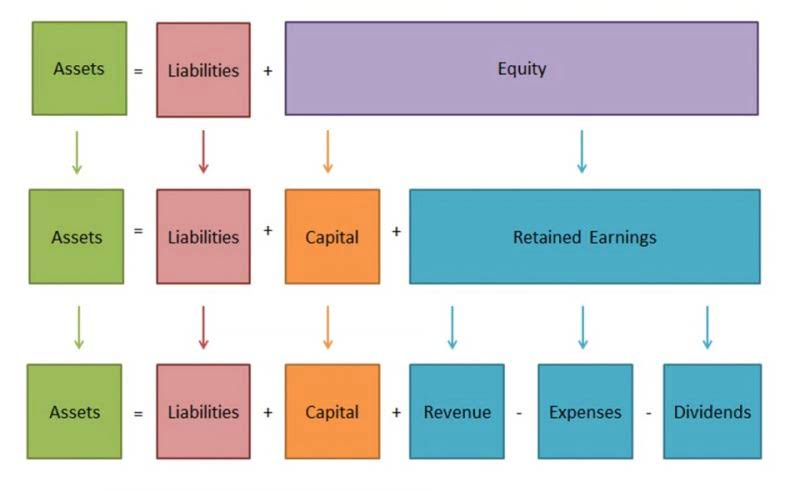Ultimately, using accounting software is going to be the easiest and most efficient way to prepare a cash flow statement—as well as manage the whole of your business finances, for that matter. By taking advantage of the automation of one of these platforms, you’ll be saving yourself time, hassle, and certainly, decrease your likelihood of errors. In this case, you’ll use the following cash flow statement formula to calculate your ending cash balance. Financing cash flows are calculated by adding up the changes in all the long-term liability and equity accounts.
What is a Statement of Cash Flows?
- You’ll want to double-check that you’ve entered all your expenditures and incomes for the analysis period.
- A negative cash flow doesn’t always imply that the company’s financial performance was bad.
- An income statement is concerned with revenues, gains, expenses and losses in both the operating and non-operating activities of the business during a specific period of time.
- While your accountant must possess one already, here is a cash flow statement template for your reference.
- Free cash flow (FCF) is the money left over after a company pays for its operating expenses and any capital expenditures.
This first method is based on transactional information that had an impact on cash flow during the period analysed. This method consists in integrating all the inflows and all the outgoing cash flows. With the assets and liabilities side of the balance sheet complete, all that remains is the shareholders’ equity side. Positive cash flow means more money is coming in during your measurement period than going out. Negative cash flow means you have more money going out than is coming in.
Small Businesses
Investing activities include cash flow from purchasing or selling assets—think physical property, such as real estate or vehicles, and non-physical property, like patents—using free cash, not https://www.bookstime.com/articles/net-30-payment-terms debt. Financing activities detail cash flow from both debt and equity financing. For instance, when a company buys more inventory, current assets increase.

How to track cash flow using the indirect method
The net cash flow from the investing line shows the change in cash flow from all investing activities. In a business, investment activities may include things like the purchase or sale of physical assets, the purchase of securities, or the sale of securities. Though all three documents deal with a company’s money, they look at it from different angles. „We find that a lot of folks start with the balance sheet and the income statement,” says Meredith Tucker, CPA, principal of entrepreneurial services at Kaufman Rossin.
Depreciation and amortization

As such, the company might be short on cash and have to borrow money or pause payroll, which can be damaging. Cash flow statements are financial accounting statements that provide a detailed picture of a company’s money movement, both what comes in and what goes out, over a certain period of time. While there are many ways to measure a company’s financial health, a cash flow statement is one of the most important documents to consider. Some valuable items that cannot be measured and expressed in dollars include the company’s outstanding reputation, its customer base, the value of successful consumer brands, and its management team. As a result these items are not reported among cash flow statement def the assets appearing on the balance sheet. Sales are reported in the accounting period in which title to the merchandise was transferred from the seller to the buyer.

- Negative cash flow occurs when a company spends more than it generates in a certain period.
- Some operating activities that result in cash inflows and outflows are listed below.
- An accounting software, like QuickBooks Online, Xero, or Wave, will allow you to maintain your books, including all of the pieces that are required for a statement of cash flows.
- A cash flow statement is a financial statement that shows the cash going in and out of a business over a set period.
- You know that the balance sheet shows a company’s assets and liabilities as of a specific date, and that the income statement shows a company’s income and expenses over a period of time.
- The first section of your cash flow statement covers cash flow generated from operations.
- It is usually helpful for making cash forecast to enable short term planning.
Raising cash through financing can support expansion, but excessive debt without revenue growth may pose risks. On the other hand, consistent dividends and stock buybacks signal financial strength and a commitment to shareholder value. To assess a company’s financial health, you have to understand its cash flow statement.
#2 – Cash flow from Investing Activities
Usually financial statements refer to the balance sheet, income statement, statement of comprehensive income, statement of cash flows, and statement of stockholders’ equity. On the statement of cash flows, think of the positive amounts (the numbers not in parentheses) as good for the company’s cash balance. For example, if the company doesn’t pay its bills, that’s good for the company’s cash balance (but bad for the liability Accounts Payable which increases). The first amount, a positive $800 change in the Cash account, will serve as a “check figure” for the line Net increase in cash on the cash flow statement for the month of March. In other words, the cash flow statement for March must end up explaining the $800 increase in the Cash reported on the balance sheet. The other balance sheet amounts that changed will be used on the statement of cash flows to identify the reasons for the $800 increase in cash.

A Story To Illustrate How Specific Transactions and Account Balances Affect the Cash Flow Statement
However, you’ve already paid cash for the asset you’re depreciating; you record it on a monthly basis in order to see how much it costs you to have the asset each month over the course of its useful life. Using only an income statement to track your cash flow can lead to serious problems—and here’s why. The result is the business ended the year with a gross vs net positive cash flow of $3.5 billion, and total cash of $14.26 billion. To facilitate this understanding, here’s everything you need to know about how to read and understand a cash flow statement. It tells you how much cash a company has left after spending on everything required to maintain and grow the business.
Download CFI’s Free Statement of Cash Flows Template
In the statement above, you can see that customers paid the company $975,000 last year, and the organization spent $563,050 on all operating expenses. In this example, the organization’s operating costs come from inventory purchases, operating and administration expenses, wages, interest, and income taxes. The net cash flow from operations line shows the difference between these two numbers, in this case, $411,950. If an organization doesn’t have enough cash to pay its expenses during a given period, it may not matter how many sales it has realized. Cash flow provides important context to information that might not be apparent on other financial statements, like a balance sheet or income statement. If a business makes a sale to a customer, that revenue often goes on an income statement and contributes to the company’s overall profit or loss.
